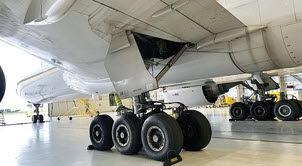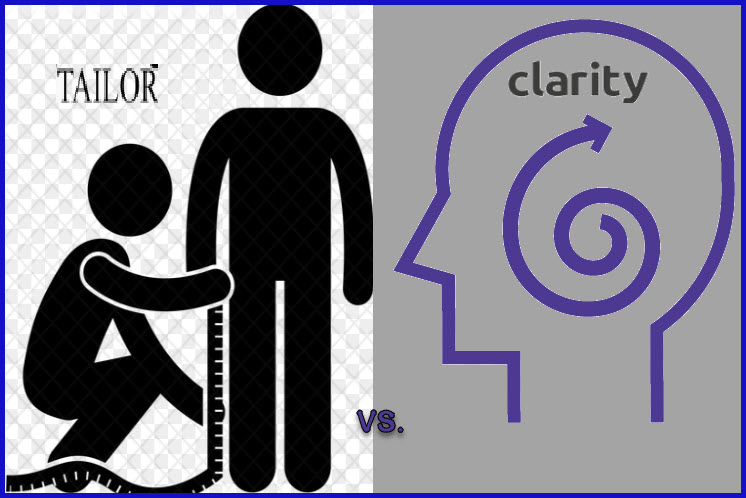Expert says MRO SMS is coming-a way to get ready NOW.

This FAA seems to prioritize safety actions based on the press attention (pilot mental health, Austin Airport problems, United Airlines and most prominently Boeing). Sean Broderick, Aviation Week’s top reporter, has written the below article on the extension of Safety Management Systems (SMS) to Part 145 Maintenance Repair Overhaul stations (MROs). THE INDUSTRY CAN VOLUNTARILY ADOPT SMS RIGHT NOW, as Mr. Broderick suggests.
How did AvWeek’s FAA “insighter” reach this observation. He points to another FAA driver—EASA and TC already require MROs to comply with SMS. Plus, he notes that:
- US Part 145 certificate holders that are authorized by EASA and TC already must implement this safety discipline under their foreign tickets.
- Both authorities indicate that they intend to include SMS in their bilaterals with the US.
Broderick’s perspicacious knowledge adds a refinement point—TC appears to be heading towards reducing “tailoring” of the 14 CFR Part 5-like “tailoring” to a single set of standards with a variety of implementation procedures.
The sage author then tracks the lessons of the Industry Expert Report (March 2024) on Boeing’s SAFETY CULTURE. In essence, the company designed all of the auditable documents and procedures required by Part 5, but the message of SMS was not effectively spread throughout the company—particularly investing the senior management team.
So, you’re an MRO and believe that SMS is a burden; true, if you adopt the approach which Boeing appears to have done. Work upfront with no real results—how did so many QA problems go unreported if the Safety Culture’s attention to errors was not held by all.
The way to transmogrify paperwork into real daily awareness by all is to involve your team in the design of SMS. It’s not enough to buy a prepared set of documents and reports; no, it begins with a committee of influences from every discipline. They work through with the logic and value of this risk assessment discipline.

Clearly, SAFETY CULTURE, SMS and the supporting systems have not been completely inculcated in some major aviation concerns. As with any creating of a rigorous set of values, these basic principles must be adopted by everyone from
- the Board,
- to the C-Suite,
- to all of management’s strata—all levels,
- to shop stewards,
- to the men and women who do the basic, yet most important work,
and no profession or job category is exempt- maybe the function is not directly involved in operations or production- ALL ARE NECESSARY TO SUPPORT A CONSTANT, COMPREHENSIVE SAFETY CULTURE.
So, what is this amorphous thing– SAFERY CULTURE? It cannot be completely defined without context. Dr. Shahdi did not define it in specific terms. Anyone, who hands you a generic program and manuals, has not been washed in essence of this discipline.
Creating this intangible spirit begins with an honest assessment of your current status and determining what to build on, reinforce and change aspects of your organization. A 3600 across all disciplines team performs these seminal steps. Being part of the company, being critical of other offices and finding solutions is a difficult assignment. Objectivity may be challenged and a menu for establishing the CULTURE may benefit from an outside process guide.

SAFETY CULTURE is an ACCOUNTABLE EXECUTIVE (AE) who is visible to all, establishes clear policies and procedures. The AE allocates resources ensuring that safety is an integral part of the organization. She or he must foster an environment where employees are empowered to prioritize safety without fear of reprisal. As trust is a cornerstone of effective safety leadership, AEs must earn the trust of the employees, enabling smoother implementation of safety policies and obtaining necessary approvals. When trust exists, employees are more likely to comply with safety instructions and procedures. While safety managers focus on compliance with regulations, AEs must actively promote safety as a core value. They seek ways to enhance safety protocols and mitigate hazards proactively, rather than merely reacting to incidents.
Once a true SAFETY CULTURE exists, there are no perceived burdens. Problems are more top-of-mind and including it in an SMS resolution is professionally and corporately rewarding. The process becomes a positive and then burden evaporates- “WE JUST AVOIDED A SERIOUS RISK AND IMPLEMENTED SOMETHING THAT BENEFITS OUR CUSTOMERS AND FUTURE MRO BUSINESS FROM THE AIRLINE.”

+++++++++++++++++++++++++
FAA Rules Aside, U.S. Shops Prepare For SMS
Sean Broderick April 01, 2024

Credit: Sean Broderick/AW&ST
The FAA remains undecided about whether to require organizationwide SAFETY MANAGEMENT SYSTEMS for its 5,000 certified repair stations, but the global footprint of many U.S.-based shops leaves them with no choice.

Transport Canada (TC) and the European Union Aviation Safety Agency (EASA) [links to their SMS for MROs] both require safety management systems (SMS) for MRO shops. TC’s mandate does not cover all shops now, but that will soon change. EASA’s requirement kicks in this December, when MRO providers are expected to have their SMS implemented.
NEITHER REGULATOR IS STOPPING AT A DOMESTIC MANDATE. The next update to maintenance annex guidance (MAG) that supplements the U.S.-European Union aviation safety bilateral is expected to include SMS requirements for more than 1,000 U.S.-based shops with EASA approval. MAG 10, as it is called, is slated for publication this year, with a likely implementation date in 2025.
The good news for affected U.S. shops: EASA is expected to agree that an SMS MEETING THE FAA’S CURRENT VOLUNTARY STANDARDS will suffice. About 20 U.S.-based shops have an approved SMS, and 50 more are setting them up or awaiting the FAA’s sign-off.
TC, an early SMS adopter among regulators, has required them for most large certificate holders for more than a decade. In the maintenance world, the mandate started with shops that serve airlines. The regulator is both revamping and expanding its SMS mandate.
Among the certificate holders expected to be affected by expansion are smaller maintenance organizations, including component shops, TC Chief of Operational Airworthiness Jeffrey Phipps said at the recent Aeronautical Repair Station Association (ARSA) conference. He also confirmed that TC plans to work SMS requirements into bilateral agreements.
“All of our international agreements are being updated to include SMS as part of any revision or any new agreement,” he said.
TC has no timeline on the SMS expansion, but a revamp of its requirements is underway.
Canada’s early foray into SMS for aviation meant its certificate holders would generate many of the initial lessons learned. A 2018 evaluation of SMS performance in Canada helped codify these lessons and guide TC in improving its regulations.
Among the key takeaways: Integrating SMS into different parts of the regulations, such as listing airline SMS requirements in Canadian Aviation Regulations (CAR) Part 700’s Commercial Air Services chapter, is too cumbersome. Instead, TC will consolidate them within CAR Part 107’s SMS chapter.
“The thought moving forward is that CAR 107 will be developed [and] simplified, and it will be the stand-alone SMS requirement for Transport Canada,” Phipps said. “So depending on the certificate you have in the future, those certificate holders will be required to comply with CAR 107 instead of putting SMS into each certificate regulatory framework.”

TC also will MOVE AWAY FROM TAILORING SMS to be scalable. While many saw scalability as vital during the development of SMS, the current view is that a single set of clear standards with sufficient guidance is most important. Organizations of different sizes may use various methods to meet the rules, but the standards themselves should be consistent.
What will the standards look like? One good bet is that they will EMPHASIZE EMBEDDING SMS THROUGHOUT AN ORGANIZATION, including in business-only functions that seemingly lack any direct ramifications on a company’s aviation safety-related functions. Another is that they will STRESS FRONT-LINE TRAINING.

Simply put, an SMS is effective only if the entire organization, especially top management, supports it unequivocally and front-line workers understand it clearly.
The ramifications of getting this wrong are detailed in a March 2024 report by 24 industry subject matter experts brought together to review Boeing’s safety culture, including its voluntary SMS. The panel found that Boeing’s SMS aligns well with accepted standards, notably International Civil Aviation Organization Annex 19, which lays out the basics of what one should contain. But MOST OF BOEING’S DOCUMENTATION DOES A POOR JOB OF EXPLAINING SMS CONCEPTS TO EMPLOYEES OR HELPING THEM UNDERSTAND THEIR ROLE.
The panel’s final report contains 53 recommendations, 17 of which address SMS-related shortcomings or improvement opportunities. The FAA, which has fixed its safety-related spotlight on Boeing after a string of quality-related problems pointing to organizationwide issues, gave the manufacturer until the end of May to craft a plan addressing the panel’s recommendations.
As for the U.S. agency, it is busily wrapping up its latest SMS rule, which will apply to manufacturers, among others. An SMS has long been required for airlines, and the voluntary programs for others, including MRO shops, are important for international harmonization. While the expert panel’s report largely targeted Boeing, it contains FAA-centric recommendations the agency plans to heed.
“We are going to take that from an agency perspective and take it on as an agency initiative,” Dan Elgas, acting deputy director of the FAA’s Policy and Innovation Division, told an ARSA audience. “We are going to use what’s in that report to influence how we implement SMS and how we address the recommendations.”

Senior Air Transport & Safety Editor Sean Broderick covers aviation safety, MRO, and the airline business from Aviation Week Network’s Washington, D.C. office.
+++++++++++++++++